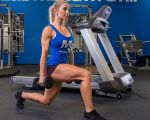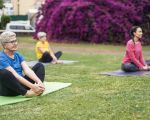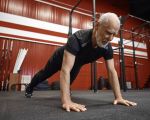Why Beginner Gym Workouts are Important
Starting a workout routine can be daunting for many beginners, especially if you're unfamiliar with the gym environment or unsure where to begin. A well-structured workout plan for beginners is essential not just for physical health but for mental well-being too. Exercise has numerous benefits, including increased energy, improved mood, better sleep, and enhanced cardiovascular health. For beginners, however, the key is starting slow and progressing steadily, ensuring that the exercises are safe, effective, and help build a strong foundation.
Moreover, beginner gym workouts play a critical role in preventing injury. If you start too aggressively, it can lead to strains or injuries, which can derail your fitness journey. A monthly gym workout plan designed for beginners focuses on building strength, improving flexibility, and gradually increasing endurance to prepare your body for more advanced exercises over time. It's important to approach your fitness goals in a way that is sustainable and realistic, and this is exactly what a well-thought-out plan provides.
Creating a Successful Monthly Workout Plan
Creating a monthly workout plan for beginners requires careful consideration of several factors. The key elements include goal-setting, workout variety, and rest days. A successful plan not only ensures gradual progress but also incorporates sufficient rest to avoid burnout or injury.
1. Set Clear Goals
Before diving into a gym routine, it’s important to define your goals. Are you looking to build muscle, lose weight, increase flexibility, or improve cardiovascular health? Setting clear and measurable goals will help you stay focused and motivated throughout the month. For example, if your goal is to lose weight, focus on a combination of strength training and cardio. If muscle-building is your goal, prioritize weight lifting with adequate recovery time.
2. Plan a Balanced Workout Schedule
A well-balanced plan will include a mix of strength training, cardio, and flexibility exercises. It's also important to schedule rest days, which are crucial for muscle recovery. A typical beginner’s workout plan might include strength training on alternating days, cardio on non-strength days, and flexibility exercises at the end of each session.
3. Track Your Progress
Tracking your progress is key to staying motivated. You can track your strength gains, stamina improvements, or even how much more energy you have throughout the day. Recording your workouts helps identify areas for improvement and boosts motivation as you see your growth over time.
Weekly Structure for a Monthly Gym Workout Plan
Structuring your monthly workout plan into weekly segments allows you to break down larger goals into smaller, manageable chunks. For beginners, consistency is crucial, and having a well-organized weekly structure helps with adherence and avoids the feeling of being overwhelmed.
1. Week 1: Foundation and Learning Proper Form
The first week should be focused on learning the basics of exercise form and understanding the gym equipment. Start with simple bodyweight exercises like squats, lunges, push-ups, and planks. This will build a foundation of strength and flexibility. Cardiovascular workouts such as walking on the treadmill or cycling for 20-30 minutes can be introduced to get your heart rate up without overdoing it.
2. Week 2: Incorporating Light Weight Training
In the second week, you can begin incorporating light weight training into your routine. Focus on compound exercises such as the bench press, deadlifts, and squats. These exercises engage multiple muscle groups and build strength more effectively. It’s important to start with lower weights and focus on mastering proper form before increasing the weight.
3. Week 3: Gradual Intensity Increase
As you progress into week three, gradually increase the intensity of your workouts. You can add more sets, increase the weight for strength exercises, and try higher-intensity cardio like interval training. It's important to listen to your body and avoid overtraining, so make sure to incorporate rest days to recover properly.
4. Week 4: Active Recovery and Assessment
The fourth week should focus on active recovery and assessing your progress. This week, you can continue with lighter cardio and flexibility work like yoga or Pilates. Take time to review the past three weeks, evaluate what’s working, and set new goals for the next month based on your progress.
Recommended Exercises for Beginners
As a beginner, it’s essential to focus on exercises that are easy to perform but also effective in building strength, improving cardiovascular health, and increasing flexibility. Here are some beginner-friendly exercises to include in your gym workout plan:
1. Bodyweight Squats
Squats are a great exercise for building lower body strength. Start with bodyweight squats and ensure that you are using proper form—feet shoulder-width apart, back straight, and knees not extending past your toes. Once you master this movement, you can add weights to increase the difficulty.
2. Push-ups
Push-ups are an excellent way to build upper body strength. Start with wall push-ups or knee push-ups if regular push-ups are too challenging. As you get stronger, you can move to standard push-ups, working your chest, shoulders, and arms.
3. Planks
Planks are a great way to build core strength. Start by holding a plank position for 20-30 seconds and gradually increase the duration as you gain strength. This exercise also engages your arms and legs, making it a full-body workout.
4. Dumbbell Rows
Dumbbell rows are an excellent exercise to strengthen your back and arms. Use a light weight to begin with, and focus on form—keeping your back flat and your core engaged. This exercise is great for building a strong foundation before advancing to more complex movements.
5. Cardio: Walking or Cycling
For beginners, low-impact cardio exercises like walking on the treadmill or cycling on a stationary bike are ideal. These exercises help improve cardiovascular health without putting too much strain on your joints.
How to Stay Motivated During Your Workout Journey
One of the biggest challenges when starting a new fitness routine is maintaining motivation. Here are some tips to keep yourself on track:
1. Set Realistic Goals
Setting achievable, realistic goals is key to staying motivated. Whether it’s being able to do five push-ups or walking for 30 minutes without stopping, having a clear goal will keep you focused and give you a sense of accomplishment as you progress.
2. Track Your Progress
Use a fitness app or journal to track your progress. Record the number of sets and reps for strength training, the duration and intensity of your cardio, and any other milestones you achieve. This helps you see how far you’ve come and motivates you to keep going.
3. Reward Yourself
Reward yourself when you reach a fitness milestone. Whether it’s buying new workout clothes or treating yourself to a massage, positive reinforcement will make your fitness journey more enjoyable.
4. Get a Workout Buddy
Having a workout buddy can make your gym experience more enjoyable and keep you accountable. Find a friend or family member who shares similar fitness goals, and support each other throughout the journey.
Why Choose Fitness for Your Workout Needs
At Fitness, we provide personalized workout plans, expert advice, and all the resources you need to start your fitness journey on the right foot. Whether you’re a beginner or looking to enhance your existing routine, our team is here to help you achieve your goals in a safe, sustainable way. With access to top-quality equipment and expert trainers, we ensure that every step of your fitness journey is supported.
Visit us today at Fitness for personalized workout plans, fitness products, and a supportive community that can help you transform your health and fitness.








